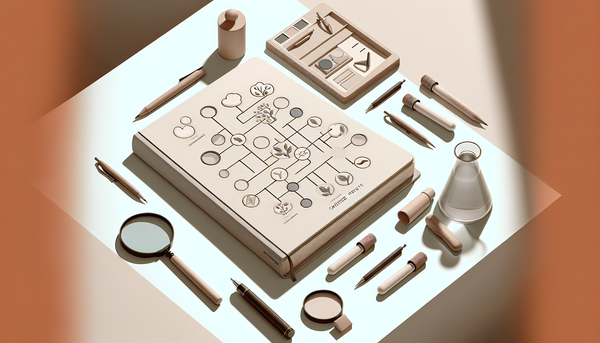How to Rebuild Trust After a Conflict

Understanding the Damage and a Path Forward
Trust is the bedrock of a healthy relationship, but it's also fragile. When a conflict, betrayal, or a series of smaller misunderstandings chip away at this foundation, the entire relationship can feel unstable. This section explores how trust erodes and lays out a five-phase framework for rebuilding it, offering a beacon of hope for couples navigating the difficult aftermath of a breach of trust.
Why Trust Erodes
Trust erosion isn't always a single, dramatic event. It can be a slow leak, where small disappointments, broken promises, and a lack of emotional support build up over time. In other cases, a significant betrayal, like infidelity or a major lie, can shatter trust in an instant. Understanding the root cause of the erosion is the first step toward repair. It requires both partners to look honestly at the dynamics of their relationship and identify the moments where connection was lost.
The 5 Key Phases of Rebuilding
Rebuilding trust is not a quick fix but a journey with distinct phases. It begins with a sincere acknowledgment of the hurt caused, moves into a period of open communication and demonstrated change, often benefits from professional guidance, and ultimately leads to a stronger, more resilient bond. This article will guide you through each of these five critical phases, providing actionable advice for both the partner who broke the trust and the one who was hurt.
Phase 1: Acknowledgment and Sincere Apology
The journey of relationship recovery begins with two fundamental steps: taking responsibility and offering a genuine apology. This isn't about making excuses or minimizing the hurt caused. It's about showing the betrayed partner that you understand the depth of their pain and are committed to making things right.
Taking Full Responsibility
Before an apology can be meaningful, the person who broke the trust must accept full responsibility for their actions. This means no "buts" or "if onlys." It's about owning the mistake and its consequences without shifting blame. This step is crucial for the betrayed partner to feel heard and validated in their pain. It signals a genuine desire to change and rebuild.
Crafting a Heartfelt Apology
A sincere apology has three parts: expressing remorse for the specific action, acknowledging the impact it had on the partner, and stating a clear intention to change. For example, instead of "I'm sorry you're upset," a better apology is "I'm so sorry I broke your trust by lying. I understand how much that hurt you and I am committed to being completely honest from now on."
Phase 2: Open and Honest Communication
With a foundation of acknowledgment and apology, the next phase is to rebuild through communication. This is where the hard work of understanding each other's perspectives and needs truly begins. It's about creating a new, more honest way of relating to each other that can withstand future challenges.
Creating a Safe Space for Dialogue
Both partners must agree to create a safe space for difficult conversations. This means no yelling, no interrupting, and no personal attacks. It might be helpful to set aside specific times to talk, so both partners can be mentally and emotionally prepared. The goal is to have a productive dialogue, not to win an argument.
Active Listening and Validation
Active listening is a skill that can be learned. It involves paying full attention to what the other person is saying, reflecting it back to ensure understanding, and validating their feelings, even if you don't agree with them. Phrases like "What I hear you saying is..." or "I can see why you would feel that way" can be incredibly powerful in de-escalating conflict and fostering connection.
Phase 3: Demonstrating Changed Behavior
Words are important, but actions are what truly rebuild trust. This phase is all about demonstrating, through consistent behavior over time, that the change is real and lasting. It's the "show, don't tell" phase of relationship recovery, and it's often the longest and most challenging.
The Importance of Consistency
Consistency is key. A single grand gesture will not rebuild trust. It's the small, everyday actions that demonstrate reliability and commitment. This could mean calling when you say you will, being transparent about your whereabouts, or actively participating in the emotional work of the relationship. Every consistent action is a brick in the new foundation of trust.
Being Patient with the Process
Rebuilding trust takes time. The betrayed partner may have moments of doubt or anxiety, and it's important for the partner who broke the trust to be patient and understanding. Pushing for forgiveness or trying to rush the process will only backfire. Both partners must accept that healing is not linear and be gentle with each other and themselves.
Phase 4: Seeking Professional Guidance
Sometimes, despite the best intentions, a couple may find themselves stuck. This is where professional help can make all the difference. A trained therapist can provide a neutral, supportive environment to navigate the complex emotions and communication challenges of rebuilding trust.
When to Consider Couple Therapy
If you find yourselves having the same fights over and over, if one or both partners are struggling to manage their anger or resentment, or if the trust issue is related to a major betrayal like infidelity, it's a good idea to seek couple therapy. A therapist can teach you the skills you need to communicate more effectively and provide tools to help you rebuild your emotional connection.
What to Expect from Therapy
In couple therapy, you'll learn new ways to talk to each other, how to identify and break negative patterns, and how to create a shared vision for your future. The therapist will not take sides but will act as a guide, helping you both to understand each other better and find your way back to a loving, trusting relationship. It's an investment in your future together.
Conclusion: The Journey to a Stronger Bond
Rebuilding trust after a conflict is a challenging journey, but it's also an opportunity to build a stronger, more resilient relationship. By acknowledging the hurt, communicating openly, demonstrating change, and seeking help when needed, couples can navigate the path of relationship recovery. The process requires patience, commitment, and a willingness from both partners to do the work, but the reward is a deeper connection and a love that is stronger for having been tested.


